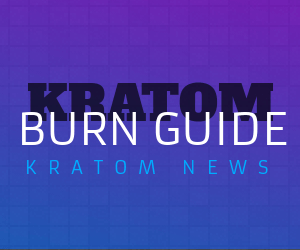With 1.2 million new residents expected in Middle Tennessee by 2045, the next transit push will be regional – The Tennessean


Middle Tennessee planning officials are laying the groundwork for the next major push to address transit and congestion, this time with a greater emphasis on regional, unified planning and on transparency surrounding that process.
The renewed effort comes nearly two years after the failed transit referendum in Davidson County, where critics often complained that the plan was restricted to Nashville and did not address regional congestion.
While the Let’s Move Nashville project, put forth by then-Mayor Megan Barry, was based on regional planning, that was not effectively conveyed to residents, said Greater Nashville Regional Council Executive Director Michael Skipper. He and other planning officials want to ensure residents are guided through the planning process from the onset this time so they can see how projects are determined.
“I think that was lost on folks,” Skipper said. “People thought there was a brand new set of projects being proposed by the mayor’s office. The reality is, a great deal of that was born out of regional coordination.”
The GNRC, comprised of mayors and state lawmakers across Middle Tennessee, has launched a new site, SolveThisTogether.org, described as a one-stop shop to bring greater transparency to transportation planning and to update residents on transportation priorities in their communities.
The GNRC seeks to create a single, comprehensive plan for the region, dubbed the Unified Transportation Plan, that identifies and prioritizes solutions. Officials plan to have a draft by this summer, with a six-month period for feedback and changes before adoption.
“If we just throw some ideas up there and try to get them funded without bringing people along, I don’t think we are going to be any more successful than we were with Let’s Move Nashville,” Skipper said. “People need to see a clear path between decision making, what went into that and what they are being asked to pay for on the ballot.”
Region’s population continues to boom
Middle Tennessee’s population is expected to increase by 1.2 million people by 2045, according to new data from the GNRC. Williamson County is expected to grow by one and half times, adding more than 327,000 people to its current population of 220,000. Wilson County is expected to nearly double, with 124,000 new people.
The number of jobs in Middle Tennessee is expected to grow more than 50% to 2.3 million by 2045, with significant increases in Davidson and Williamson counties. With that comes more commuting and greater congestion. The urgency for action seems to resonate more with residents and with government officials than in previous years, said Michelle Lacewell, GNRC deputy director.
WHO IS MOVING HERE? Nashville’s growing like crazy. But just who ARE these new people?
“The environment is completely different than in 2016,” she said, referring to the adoption year of the GNRC’s previous regional plan. “We have a more significantly engaged population around the issue.”
In a 2018 referendum vote, Davidson County voters overwhelmingly rejected a transit plan that would have raised taxes and brought light rail, a tunnel, rapid bus transit and bus upgrades to Music City. The plan was estimated to cost $5.4 billion, a price tag that increased to $9 billion when factoring in operational, maintenance and other long-term costs.
Many Middle Tennessee mayors encouraged Nashville voters to approve the funding, stressing that it was the first step in a regional approach. Under the state’s IMPROVE Act, passed in 2017, several counties and cities are allowed to approve transportation funding through ballot initiatives but can only do so individually, not through a single, regionwide vote.
Going forward, Skipper said there is potential for multiple counties to work on an investment together. Counties could still vote separately but simultaneously, and develop contingencies if not all counties approve funding.
There also could be additional work with lawmakers to develop regional funding mechanisms, but Skipper said the status quo does not prevent regional cooperation, as demonstrated by progress in other states.
“Every available statistic makes it clear the region must act decisively in 2020 to deal with growing traffic and roadway safety concerns,” Franklin Mayor Ken Moore, chairman of the GNRC’s Mayor’s Caucus, said in a statement. “As our region continues to grow, we must work across county lines and in collaboration with the state to find real solutions supported by policymakers and the public.”
The Unified Transportation Plan will be coordinated by GNRC, along with Tennessee Department of Transportation, local transit authorities and municipal governments across the region. Metro areas are required to update their regional plans every five years to remain eligible for federal funding.
“Traffic for people trying to get in and out of downtown Nashville is unpredictable, creating problems for the entire region,” said Nashville Mayor John Cooper, who sits on the GNRC Transportation Policy Board. “We need everyone’s voices at the table to ensure equitable solutions.”
Population growth expectations: 2018 to 2045
- Cheatham County: 40,000 to 54,000, 36% growth
- Davidson County: 685,000 to 848,000, 24% growth
- Dickson County: 52,000 to 66,000, 28% growth
- Houston County: 8,200 to 10,200, 24% growth
- Humphreys County: 18,000 to 20,000, 10% growth
- Maury County: 89,000 to 117,000, 32% growth
- Montgomery County: 196,000 to 344,000, 75% growth
- Robertson County: 70,000 to 101,000, 46% growth
- Rutherford County: 306,000 to 556,000, 81% growth
- Stewart County: 13,000 to 16,000, 20% growth
- Sumner County: 179,000 to 280,000, 56% growth
- Trousdale County: 8,800 to 10,000, 16% growth
- Williamson County: 220,000 to 548,000, 149% growth
- Wilson: 133,000 to 257,000, 94% growth
- Total: 1.4M to 2.1M, 60% growth
Reach Jamie McGee at 615-259-8071 and on Twitter @JamieMcGee_.
Published 8:34 AM EST Jan 30, 2020
